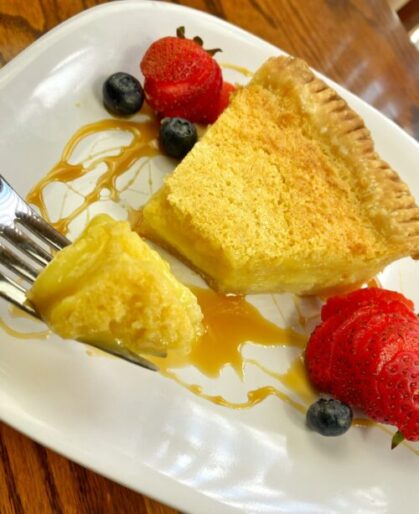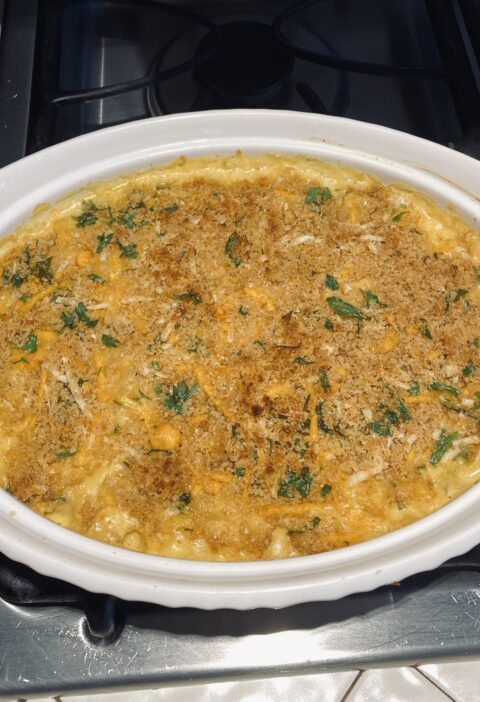Chess Pie traces its history from as far back as the colonial era. The traditional Chess Pie is a common man’s pie; its primary ingredients could be found in anyone’s pantry, so it became the “go-to” dessert when one was called for in a pinch.
Imagine bustling bustling about finishing dinner in the kitchen and your dear husband calls back, “Harriett, what’s for dessert?” You reply humbly, in your southern accent, “Oh, jest pie!”
Another school of thought takes into mind that no one had refrigerators or even ice boxes back then. Many homes used a “pie chest” that they kept near the kitchen, with ventilation holes and/or screens that kept the flies out. That was be the best place to put a pie to keep it edible for a longer time.
There are other theories but these are the most prevalent.
Chess pie has benefited over the years from the availability of flavorings that may not have been commonplace in colonial America. There are Lemon Chess pies, Chocolate Chess pies and more variations. But a classic Chess pie will always have a small amount of its signature ingredient, cornmeal, and a little vinegar. A fairly high amount of sugar most likely helped in its longevity on the shelf.
The traditional Chess pie calls for whole eggs stirred into a fairly simple custard mixture that is poured into an unbaked pie shell. My grandmother’s version calls for evaporated milk (a more modern but shelf stable ingredient) and separates the eggs for a more luxurious filling, retaining the egg whites for meringue that makes a great finisher for this rich pie.






